This Frozen World, Like Snow in Midsummer
Pamukkale, honestly, took my breath away.Trundling through the plains and mountains of Central Turkey, a vast white slope emerges from nowhere, as if a giant hand lifted up a ski slope and deposited it among Anatolian farmland.
But this frozen world isn’t made of snow.
In Turkish, Pamukkale means “cotton castle”, and the calcite-rich waters which tumble down from the mineral hot springs at the top of the cliff leave ripples of brilliant white minerals below your feet, and form flawless infinity pools.
Some are so beautiful they look manmade.
But they’re not.They’re natural.
Below the minerals is travertine limestone, formed over long ages.
When the Greeks first built a city there, Hierapolis, to heal themselves with the soft, warm water and this surreal landscape, this frozen world, they were already fully-formed.
The bubbling slopes look frozen in mid-flow. Which, I guess, in geological time they are.
Calcites glitter like ice in the sunlight, smoother than quartz.
Warm water drips like icicles.
In human time, or small human time, the slopes beckon you to climb them.
We pad up through the flowing waters in bare feet, Zac pausing to smear his face with the soft, white sand that accumulates in these natural pools, and pausing again to body block the waters that rush down the narrow channels, cooling as they come.
In the ripples and rivulets of minerals beneath our feet, pools form again, in microcosm, almost fractals.
At the top, the ruins of Hierapolis extend right down to the top of the pools, some of them travertine limestone, others still glittering bright.
We have bathed where Greeks, Phrygians, Romans and countless longlost people bathed before us, felt the same sense of wonder that they did.
Because, even in high summer, even with the tour groups in full flow, Pamukkale is a place of wonder.
Like the sun rising over Uluru, the painted lakes of Flores, the caves of Jeita, Lebanon, and Konglor in Laos, like an undersea volcano or a reef wall dropping into darkness below my fins, it left me simply gobsmacked that a place like this exists.


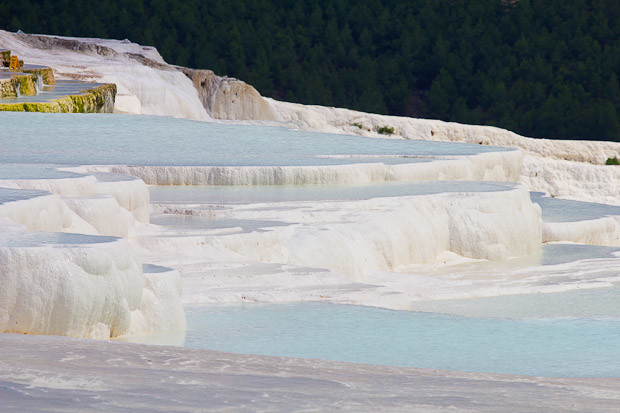
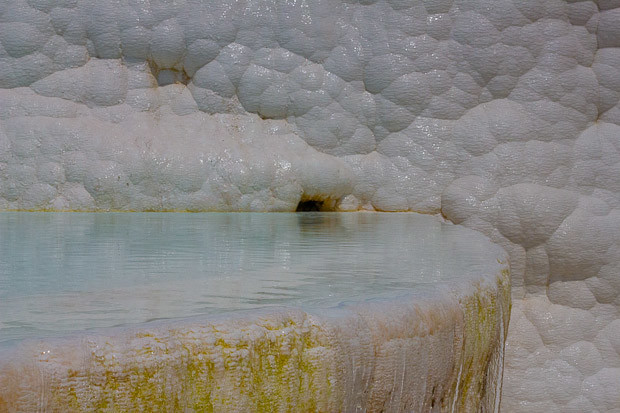
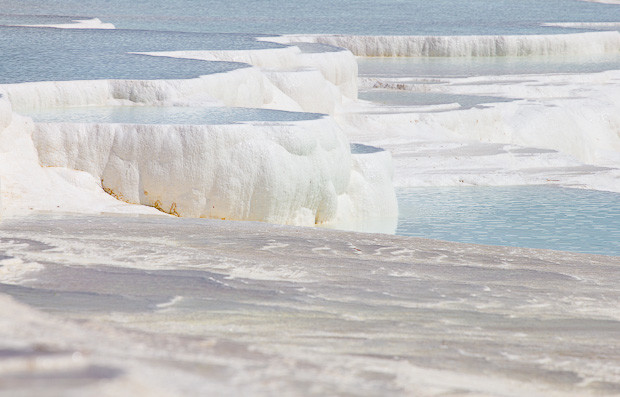
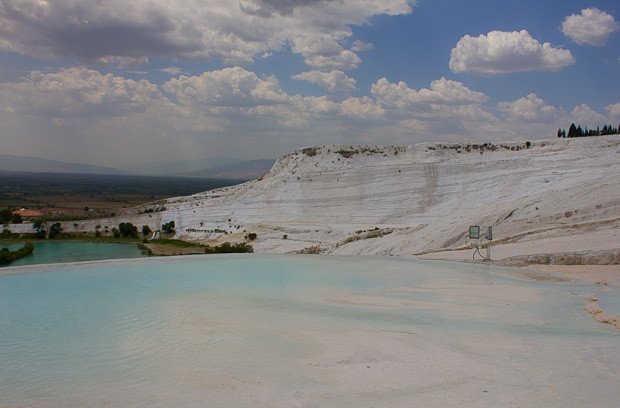
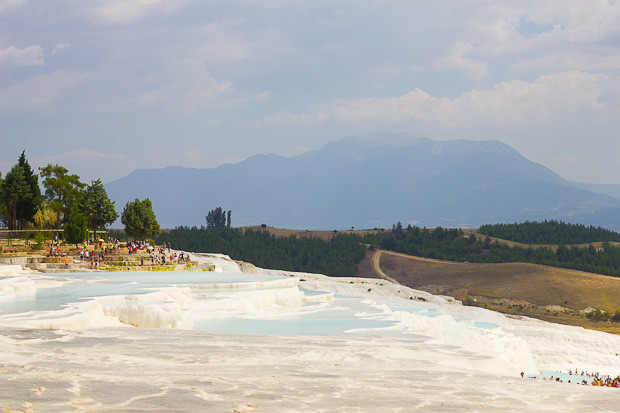
Yes, Pamukkale is stunning, isn’t it? All the tourists notwithstanding.
We camped at one of the campgrounds below it (well, across the road), and the snowy look of the travertine out the camper window really messed with my mind. Kept expecting it to be cold and wintery when I walked outside.
Glad they’re taking better care of it these days. Apparently at one time you could drive on it. Jeesh.
YES! That’s exactly what it did to me. It looks freezing, doesn’t it?
I can’t believe you’re allowed to climb on it, TBH. I think in a generation’s time that’s going to look like my childhood habit of picking up bits of pottery from archaeological sites, and adding them to my “museum”. AKA, as unacceptable as collecting shells and coral now is.
Mind you… Phrygians, Greeks and Romans climbed on it, and it’s doing OK, although I guess the numbers weren’t quite what they are in high summer…
Agreed, completely. I felt a bit naughty climbing on it.
So it wasn’t crowded with a million tour buses and fat Russians in Speedos and bikinis, posing in front of the pools? When I went (in July a few years ago), it was really overwhelming and very disappointing– the water was mostly dried up and the limestone was kind of discoloured. Bummer. Now I have to go back!
I remember you telling me that, and I almost didn’t go — but I really wanted to see it.
Honestly, there WERE a lot of people there, including Russians in bikinis (some walking around TOWN — a little, inland, Turkish town!!! — in bikinis) — and I think peak season is not the ideal time to do it. I’d aim for May or June, when it’s hot enough to get the contrast between the frozen look of the place, and the warm outside temperatures, and when it’s still nice to get in the pools. In fact, I’d aim for May-June in Turkey full stop.
A few of the pools are dry, just filled with calcite sand, but most have water in, so I think it’s picked up both from when you visited and from when my guidebook was written: there’s also great floods and streams of water running down the path you go up. There’s a bit of discoloration in places, but most of it’s pristine…
The limestone, though, is always discolored. It’s the sparkly minerals on top that’s less so…
Never been there, but looks just like the Painted Terraces in Yellowstone National Park. Well same phenomenon creates them, so guess that explains it… you can’t go in those ones though, water’d burn you up. 🙁
Yellowstone is rapidly rising up my bucket list of places to go, Yvette. I’ve barely seen any of the US.
There’s something really crazy about seeing boiling water emerge from the ground, isn’t there? We went to a waterfall in Java that was steaming hot (in Javanese heat and humidity) and, yes, literally too hot to swim in.
I never heard of this place before. Stunning!
It’s lovely. My guess is that the best time to visit is May or June, before the real crowds come through, but even in high season, it’s just plain stunning.